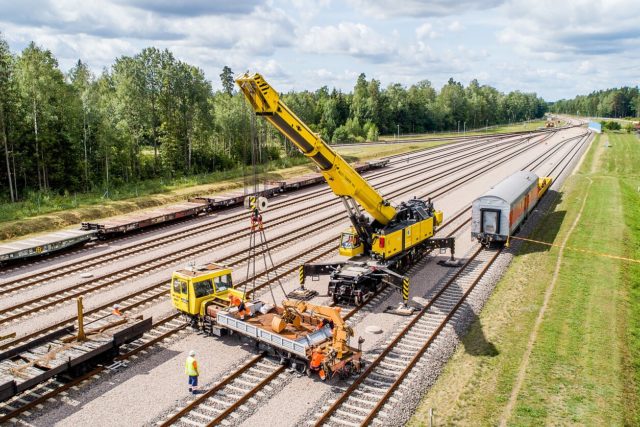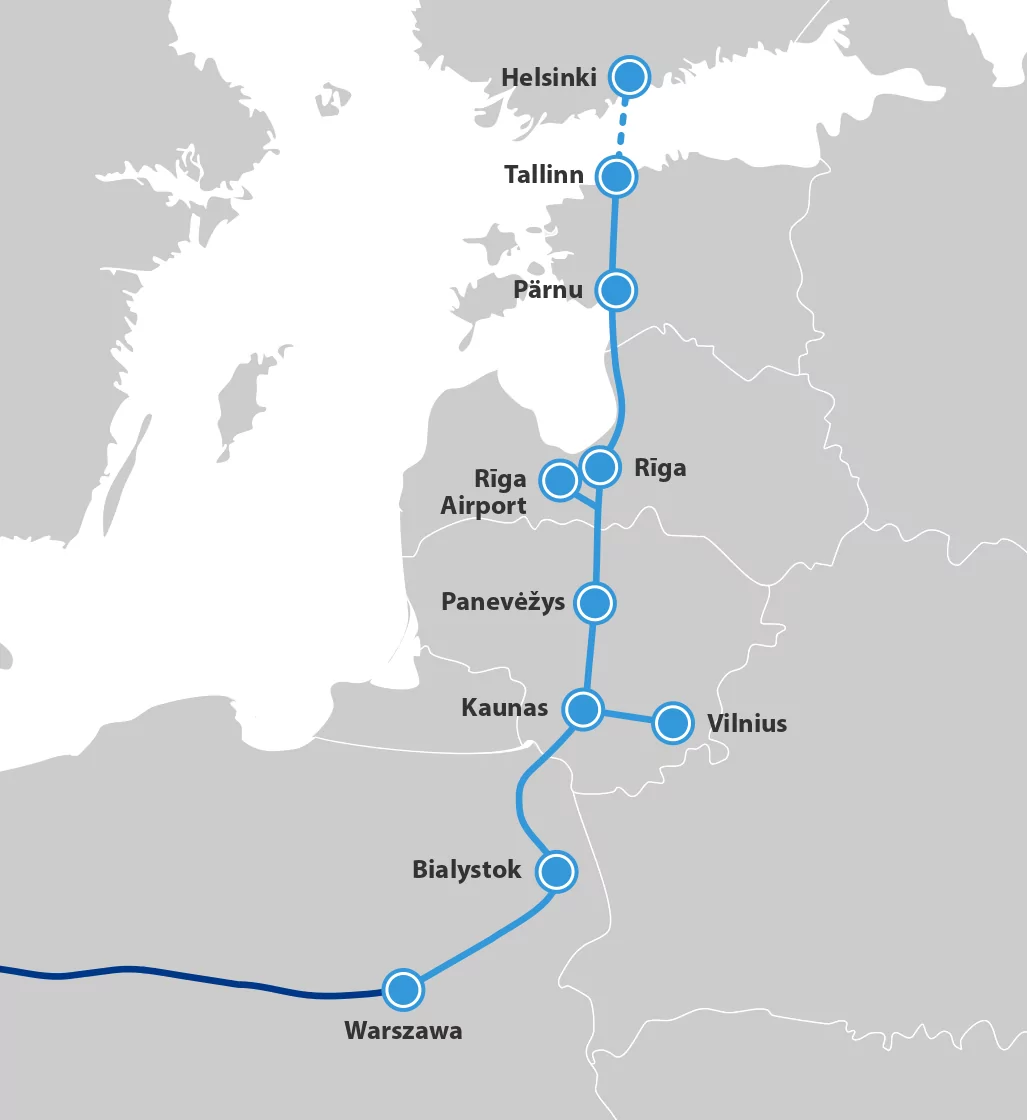
Rail Baltica Moves Ahead but Suffers From Major Construction Delays
Publication: Eurasia Daily Monitor Volume: 17 Issue: 97
By:

The multinational Rail Baltica project, which had been in the planning and design stages since 2014, finally entered the phase of actual construction of the railway line and related infrastructure objects at the beginning of last year (Railbaltica.org, accessed June 30). Work is already underway in Estonia and Lithuania. In Latvia, construction will start this fall, according to Latvian Transport Minster Tālis Linkaits (LSM, May 25). But although developers of the 870-kilometer passenger/freight railroad contend it will be completed on time, by 2026, the project has started to encounter serious delays (LRT, April 21).

The electrified, high-speed Rail Baltica line will connect Warsaw, Kaunas, Vilnius, Riga, Tallinn and, indirectly, Finland. The total cost of the project is estimated at around 5.79 billion euros ($6.51 billion). The Latvian segment of Rail Baltica envisages significant modifications to the Riga Central Railway Station as well as additional measures to integrate the railroad into Riga’s existing transport infrastructure networks. The Estonian section of Rail Baltica is divided into three parts, with design work already underway on the Tallinn–Rapla and Rapla–Tootsi sections. Construction on a total of 17 road viaducts will also soon begin (BNN, January 9). Lithuania is currently accelerating design work in the section from Kaunas to the Latvian border (International Railway Journal, April 30).
When completed, Rail Baltica promises to contribute to the security of the three Baltic countries by facilitating smoother military mobility and logistics of allied troops attempting to deploy into the region from their bases in Poland and Germany (see EDM, October 19, 2016 and June 28, 2017).
Despite optimistic official statements regarding the project’s progress, reports from earlier this year have pointed to mounting delays. “In the eyes of the public, the Rail Baltica project has progressed well in 2019; but in real life, it is different and implementation of the project is behind by several years,” said Timo Riihimäki, a former chairperson of the Baltic joint venture RB Rail. He pointed out that a project of this scale cannot smoothly move forward when all decisions depend on securing quorums, veto rights and unanimous agreement with all parties. “This year, as the first real construction work begins—construction of several bridges and viaducts, as well as new railway tracks and the reconstruction of stations in Estonia, Latvia and Lithuania—it has become obvious that the project’s originally planned deadlines will not be met (Rebaltica.lv, February 5).
Latvia and Estonia blame Lithuania, which built the wrong type of rails from Kaunas to Poland and is delaying fixing the blunder (Baltic Times, May 12, 2019). Train between Kaunas and Białystok started running in 2016. The approximately 200-kilometer-long journey takes almost five hours—far from the promised modern, high-speed connection.
Apparently, there are two ways to resolve this problem. The first is to completely rebuild the existing rail line. The second is to build new parallel rails. Both options require a lot of money. Preliminary estimates show that, in either case, the cost would be 600 million–700 million euros ($676 million–788 million)—almost twice as much as Lithuania spent to build the line now in operation—and would increase the cost of Lithuania’s share of the total Rail Baltica project by at least 24 percent (Rebaltica.lv, February 5). Meanwhile, other important stumbling blocks exist in the other two Baltic States—Latvia and Estonia are far behind schedule in preparing the land up and down the new rail corridor.
According to the officially published plans, construction of Rail Baltica is supposed to be completed in 2025, with trains beginning to run in 2026. Yet, Transport Minister Linkaits was already warning back in 2019 that the railroad “has been delayed for at least two to two-and-a-half years, and it is clear that the track will not be built in its entirety by 2026” (LSM, February 21. 2019).
“We should all be clear that the delays in implementing the project are very significant. According to the latest assessment, the first two European funding agreements concluded in 2014 and 2015 are already more than two years overdue,” said Henrik Hololej, the head of the European Commission’s Directorate-General for Transport, during a meeting of the Baltic prime ministers, in Vilnius, in December 2018. An audit of the Rail Baltica project published last January revealed risks of budget overruns and failures to keep to the original timetable. The European Commission, Latvia and Estonia would like more centralization within the Baltic joint venture that coordinates the project (LRT, April 21).
The ministers of transport of Lithuania, Latvia and Estonia discussed the implementation status of the Rail Baltica project during a videoconference, in late April. They assessed that the COVID-19 pandemic had not undermined the implementation of the project. And in fact, they argued that the development of Rail Baltica could be a driving force in helping the Baltic region’s economy overcome the negative consequences of the health crisis. Still, the three Baltic ministers expressed concern over how best to improve the decision-making processes guiding the construction of the regional high-speed railroad (Delfi.lv, April 21).
Even as it continues to face a number of political, administrative and technical challenges, Rail Baltica is reaching the most decisive development phases of the project. Success will depend on closer cooperation among the capitals of the Baltic countries as well as effective corporate management of this strategically important endeavor.



